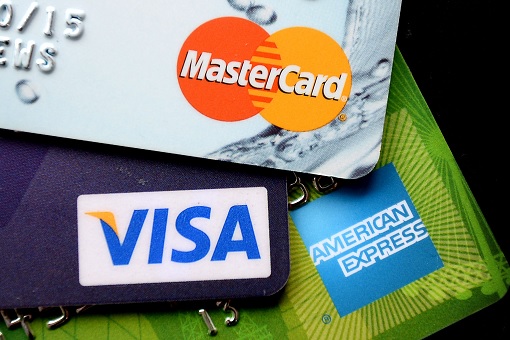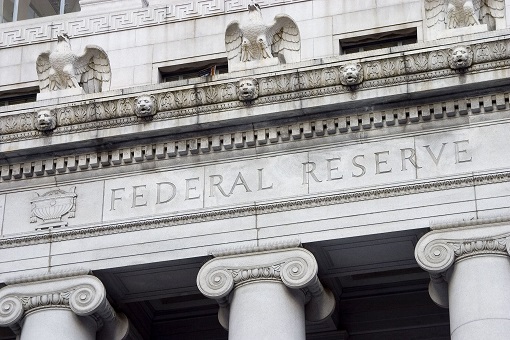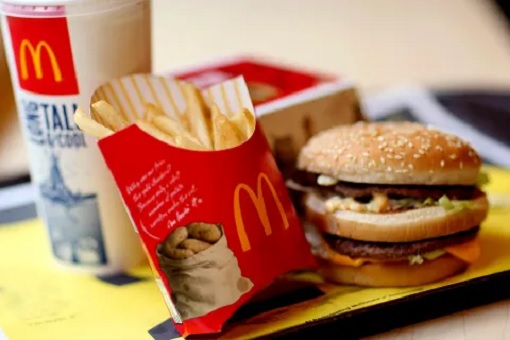Regardless whether you belonged to Baby Boomers (born from 1946 to 1964), Generation X (born from 1965 to 1980) or Millennials (born from 1981 to 1996), you can’t run away from something called credit card debt. Consumers love using credit cards, but at the same time hate paying off outstanding debt. Credit card debt is like a never-ending battle, with minimum payments and high interest rates.
There’s a reason why Mastercard laughed all the way to the bank last year. Its stock price has breached US$450 a share as its annual net income for 2023 hit a jaw-dropping US$11.19 billion – up from US$9.93 billion in 2022. Its competitor, Visa, on the other hand, made US$17.98 billion in net income last year, an increase from US$14.95 billion in 2022.
While most people may think Visa is the largest credit card company in the world, powering 4.3 billion cards globally and processed more than US$15 trillion in payments every year, American Express actually makes almost double Visa’s revenue. American Express annual revenue of US$60 billion was simply mind-boggling compared to Visa’s US$33 billion.

The simple reason why credit card companies make so much money is because people tend to spend more when using credit cards than cash. Because most do not keep tabs on their budget, consumers simply get a second credit card after the first one reached its limit, and continue to spend more than they earned. This allows credit card companies to make money by charging interest, miscellaneous fees, and interchange fees.
In 2022, the average American family’s credit card debt was US$6,120. However, this spiked to US$6,555 in 2023. According to data released by the Federal Reserve, Americans’ total credit card balance reached US$1.129 trillion in the fourth quarter of 2023. While people of Mississippi have the lowest average credit card debt of US$5,186, New Jersey residents owe the most debt at US$8,155 per credit card.
Even before the Federal Reserve’s 11 interest rate hikes since March 2022 to tame inflation – the fastest pace of tightening since the early 1980s – credit card rates were already high. With the Fed maintaining the interest rate in a range of 5.25% to 5.5%, without any clue when it will start cutting the rate, borrowing costs will remain high. That will impact everything, from credit card rates to loans for vehicle purchases or real estates.

Despite bullish stock market, many consumers were struggling with higher prices, especially for food, fuel and housing. This leads more cardholders to carry debt from month to month or even falling behind on payments. According to the National Foundation for Credit Counseling (NFCC), about 31% Americans fail to pay all their bills on time, and only 42% maintain a budget.
Those affected the most were singles, renters, parents with children under 18, and individuals earning US$50,000 or less annually. Millennials, particularly borrowers between the ages of 30 and 39, are burdened by high levels of student loan debt. And thanks to stubborn inflation and fluctuating gas prices, people are forced to use their credit cards just to stay afloat.
Worse, almost 45.5% of Americans opened at least one new account last year as credit card remains the quickest way to access fast money, leading to 542.6 million new accounts by the end of 2023. But nearly one-tenth of credit card users find themselves in “persistent debt” where they are charged more in interest and fees each year than they pay toward the principal – hence endless debt.

Inflation, which peaked at 9.1% in June 2022, is now slightly above 3%. But the costs of many goods and services remains high. A loaf of bread that cost US$1.54 in December 2020 cost US$2.02 at the end of 2023, whilst a gallon of gas has skyrocketed from an average of US$2.17 to US$3.29 in the same period. The median rent for a 2-bedroom property has jumped from US$1,424 (end of 2020) to US$1,713 (end of 2023).
With the average credit card rate hovers above 21%, it’s cheaper to pay credit card debt off with a personal loan, which charged an average rate of about 12%. The generations of Baby Boomers and Generation X carry the most credit card debt per person on average, with Millennials fast catching up. Still, the current average credit card debt is nowhere near its peak during the 2007-2008 Global Financial Crisis – spiking to US$10,490.
However, even as credit card balances fell from US$10,490 (2007) to US$6,555 (2023), balances of other types of credit spiked to US$126,690 for all American families in 2022. The debts have just shifted from one form to another, such as personal loans or mortgages. In fact, since Covid-19 pandemic in 2019, the increase in credit totals has jumped 250% in 2022.

Consumers are so broke that McDonald’s is working to re-introduce a US$5 value meal in the U.S. stores. The meal, still on the drawing board, could include three menu items – a McChicken or McDouble or four-piece chicken nuggets, along with fries and a drink. The plan was to lure consumers back to the burger chain as low-income consumers are beginning to pull back on spending, particularly at fast-food brands.
McDonald’s missed its first quarter profit estimates for the first time in two years, which was blamed on budget-conscious consumers in addition to the conflict in the Middle East. During the company’s first-quarter earnings call, Chief Executive Officer Chris Kempczinski said McDonald’s had to be “laser-focused on affordability” given how price-sensitive consumers have become.
After revealing McDonald’s first-quarter sales grew 2.5% in the United States, sharply lower than a 12.6% growth last year, Kempczinski said – “Consumer is certainly being very discriminating in how they spend their dollar. I think it’s important to recognize that all income cohorts are seeking value.” Adjusted per-share profit was only US$2.70, below an estimated US$2.72.

But McDonald’s was not alone. Other fast food chains like Wendy’s and Dave and Buster’s have similarly noted restraint in spending, and have been toying with ideas to help offset an increasingly challenging environment for consumers. The US$5 value meal proposal, however, is easier said than done. Such promotions could eat into McDonald’s corporate and franchisees’ profits.
Even if the US$5 meal was to take off, it could only be launched in certain regions. For example, operators would certainly lose money in California, where the minimum wage for fast-food workers jumped 25% to $20 an hour earlier this year. Thanks to Bidenomics, many Americans can no longer afford a Big Mac combo meal, which used to be US$5 in 2008, but has skyrocketed to US$18 today.
To make the deal work, heavyweights like Coca-Cola must inject marketing funds to make it more feasible and appealing. McDonald’s has already introduced a US$12 value meal called “MickeyD’s Dinner Box” in Texas – two cheeseburgers, four small fries, ten-piece chicken nuggets, and two Big Macs – that could feed a family of five as part of the fast food chain’s experiment.

Even without boycott as a result of Israel-Hamas war, McDonald’s has to retain customer loyalty as competition in fast food chains becomes fierce. Wendy’s is offering US$5 Biggie Bag, not to mention Domino’s US$7.99 carryout and US$6.99 Mix and Match deals, as well as Burger King’s US$5 Duos (two items – Whopper, Big Fish, Original Chicken Sandwich, or Chicken Fries).
Other Articles That May Interest You …
- A Racist KFC-Wannabe Doomed To Fail – DFC Should Improve Malay Proficiency First Before Insulting Chinese As “Type C”
- Boycott Gone Sour – Malays Returning To McDonald’s Insulted And Called “Dogs” & “Pigs” By Fellow Malays
- The World’s 5 Richest Men Owned Close To $1 Trillion – But 5 Billion People Globally Become Poorer
- China Creates Digital Currency – Here’s Why It’s A Big Deal To The World’s Economy, And A Big Problem For The U.S.
- Looking For A Career? – Here’s Top-10 Most In-Demand Jobs Or Industries This Year In Southeast Asia
- Boycott Non-Muslim Products – Do You Own Enough Products Or Have Financial Muscle To Go To War?
- How A Coffee Cup In Season 8 Of “Game Of Thrones” Gave Starbucks $2.3 Billion In Free Advertising
- Ouch!! Apple Has Lost $452 Billion – That’s 3 Times Size Of McDonald’s Or The Entire Facebook
- Planet’s Top-20 Ultimate Best Food – Malaysia Hawker Food “Curry Laksa” Ranks 2nd Place
- Wanna Work At McDonald’s? Here’re 20 Job Interview Questions & Answers

|
|
May 14th, 2024 by financetwitter
|


|

|

|

|

|

|




























Comments
Add your comment now.
Leave a Reply